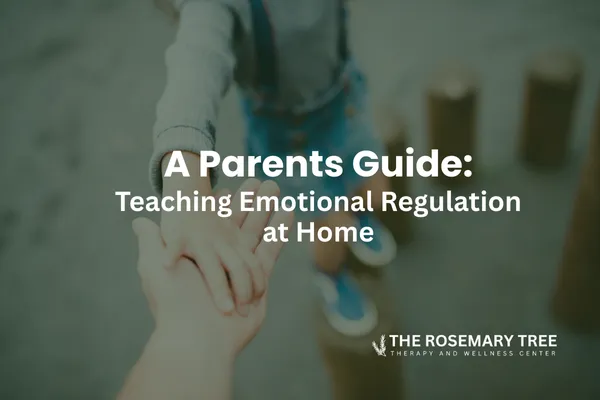
A Parent’s Guide to Teaching Emotional Regulation at Home
As a parent, one of the most important skills you can help your child or teen develop is emotional regulation; the ability to understand, manage, and respond to emotions in healthy ways. Without these skills, kids often struggle with big feelings, leading to meltdowns, conflict, or shutting down.
At The Rosemary Tree, we believe parents play a powerful role in modeling and teaching emotional regulation. Here’s a practical guide you can start using at home.
Why Emotional Regulation Matters
Emotional regulation is linked to:
Better mental health
Stronger relationships
Improved academic performance
Lower risk of risky or destructive behaviors
When kids learn to regulate emotions early, they carry those skills into adulthood.
5 Ways Parents Can Teach Emotional Regulation
1. Model Calm Behavior
Children mirror what they see. If you respond to stress with yelling or shutting down, they will too. Practice deep breathing, pausing before reacting, and using calm language — then talk about what you did out loud so they can learn by example.
2. Name Emotions Together
Help kids put words to their feelings. Instead of “I’m bad” or “I hate this,” teach them to say, “I feel angry,” “I feel sad,” or “I feel worried.” This creates space between the feeling and the action. Using emotion charts can be a fun and visual way to start.
3. Teach Coping Tools Early
Introduce simple strategies like:
Taking deep breaths
Counting to ten
Squeezing a stress ball
Going for a walk
Using grounding exercises
Practice these when your child is calm so they’ll be ready when emotions run high.
4. Validate, Don’t Dismiss
When your child says, “I’m upset,” avoid phrases like “Don’t be silly” or “It’s not a big deal.” Instead, respond with validation: “I can see you’re upset. That makes sense.” Validation builds trust and helps kids feel safe to express emotions.
5. Practice Problem-Solving Together
Once emotions calm, work with your child to find solutions. For example: “You’re angry your friend didn’t include you. What could you do next time?” This builds resilience and shows that emotions are manageable.
Tips for Parents of Teens
Teens often crave independence but still need guidance. Encourage open dialogue and give them space to try coping strategies themselves, while reminding them you’re there for support.
When Professional Support Helps
If your child’s emotions are overwhelming, constant, or affecting daily life, therapy can provide additional tools and support. At The Rosemary Tree, we work with families to strengthen emotional regulation skills through approaches like DBT, CBT, and creative therapies.
Learn More From Trusted Resources
American Psychological Association: Emotional Regulation in Children
National Institute of Mental Health: Child and Adolescent Mental Health
Final Thoughts
Emotional regulation doesn’t develop overnight — it’s a skill that grows with practice, patience, and modeling. By teaching and practicing these tools at home, you’re giving your child a gift that will benefit them for life.
